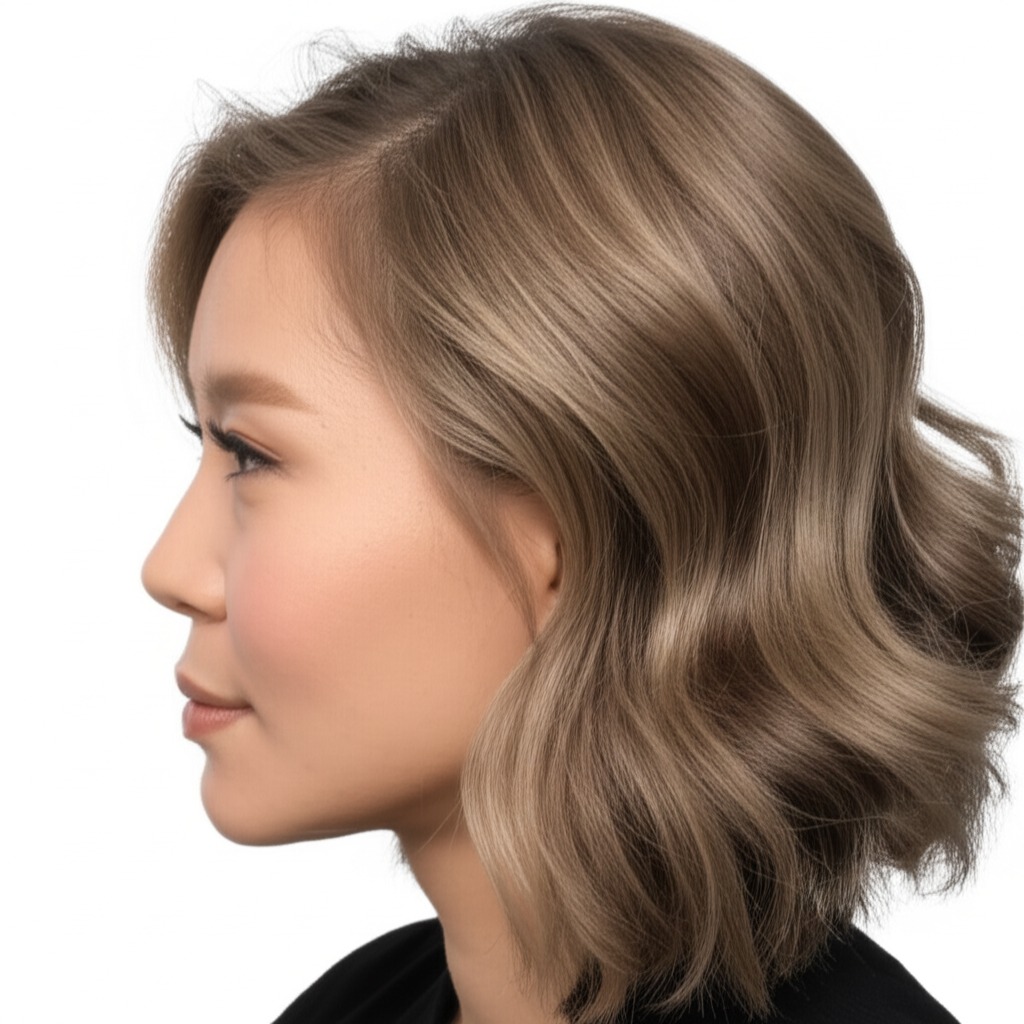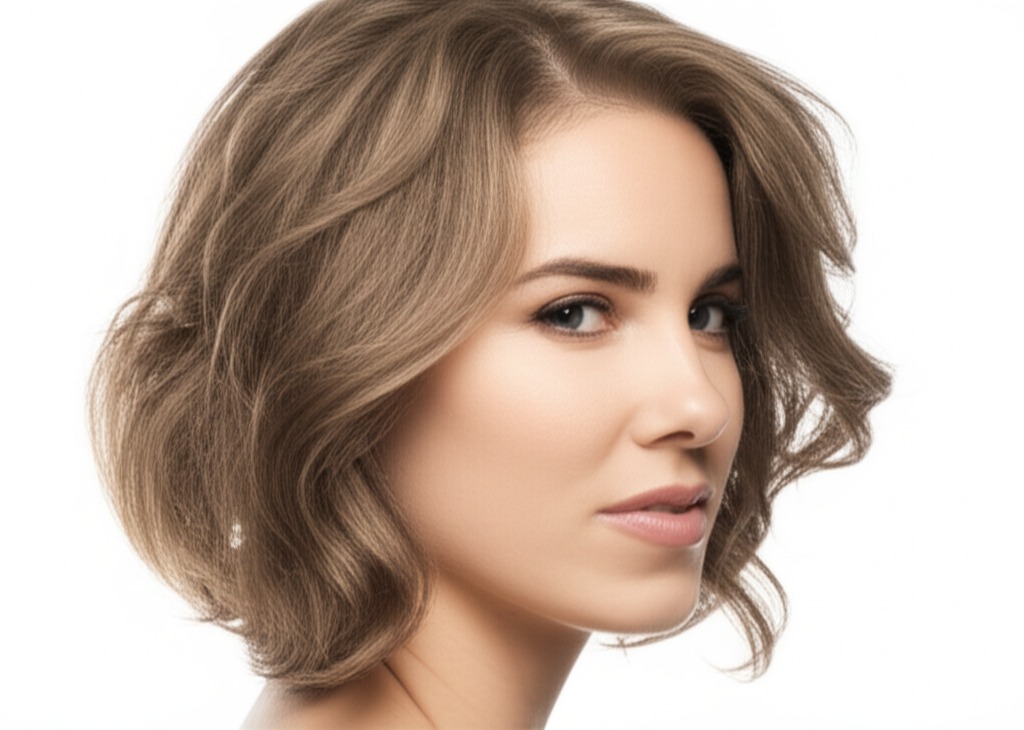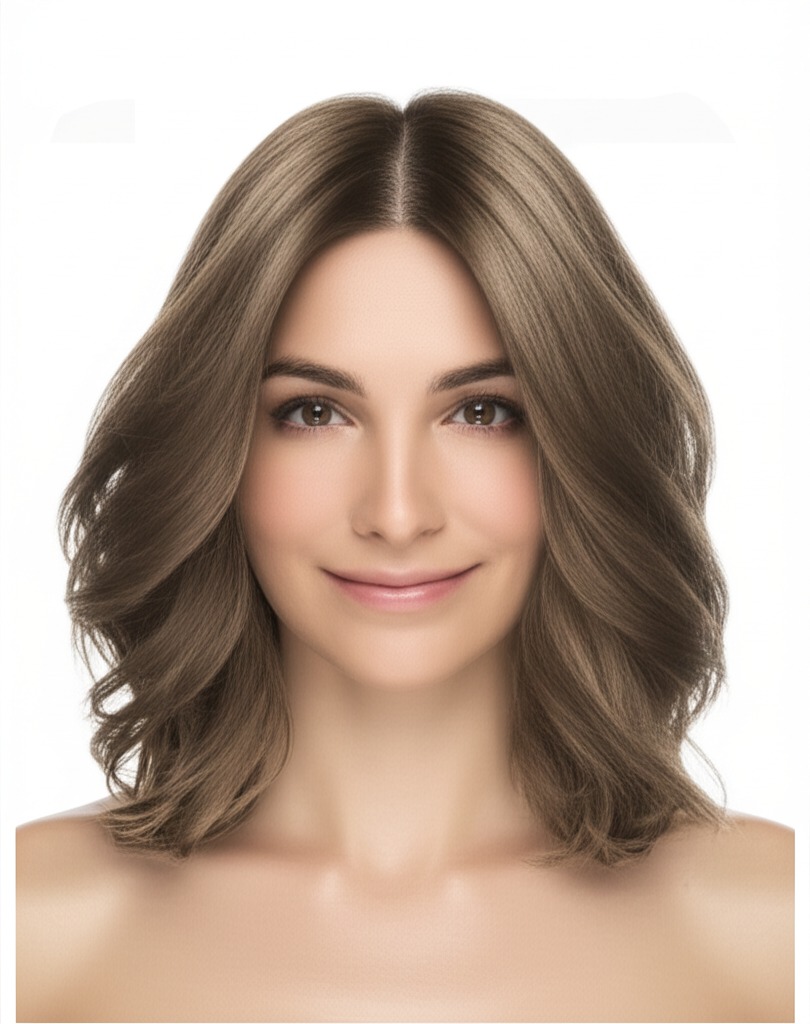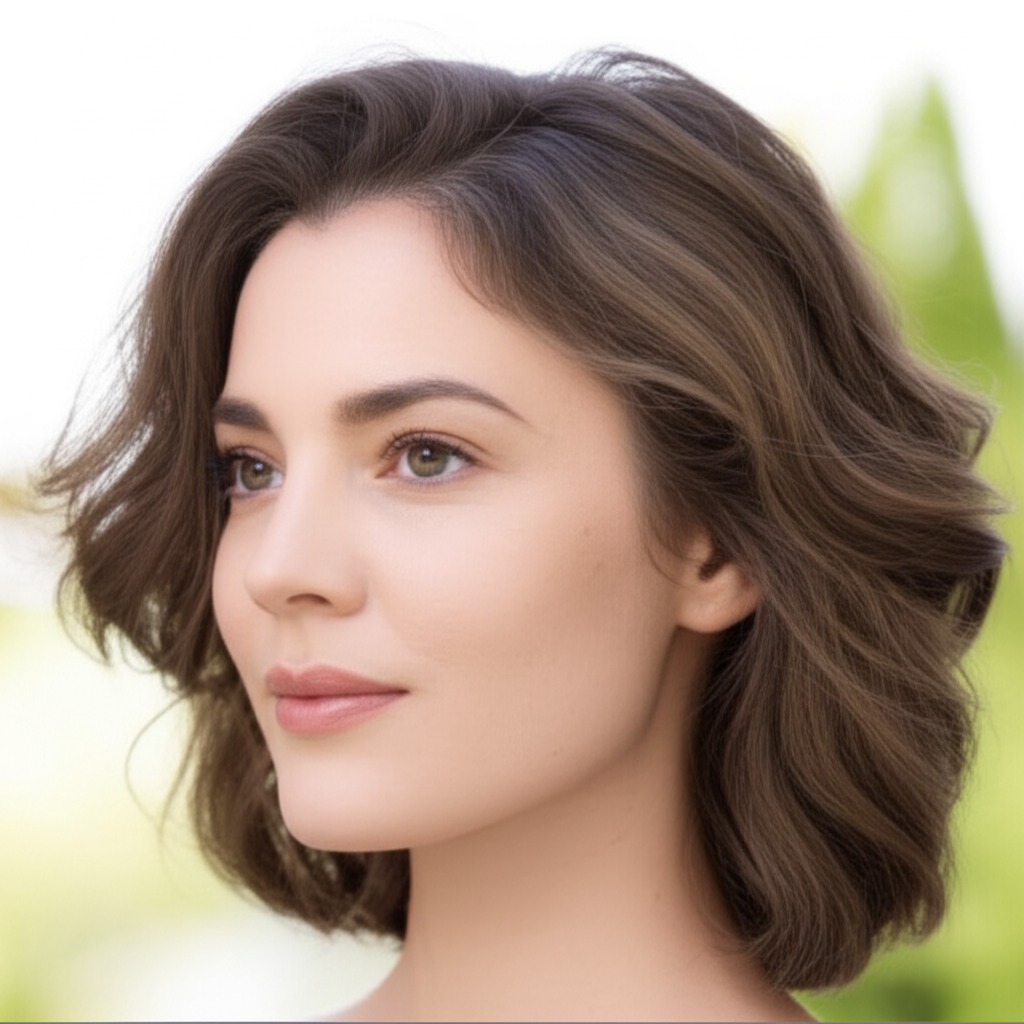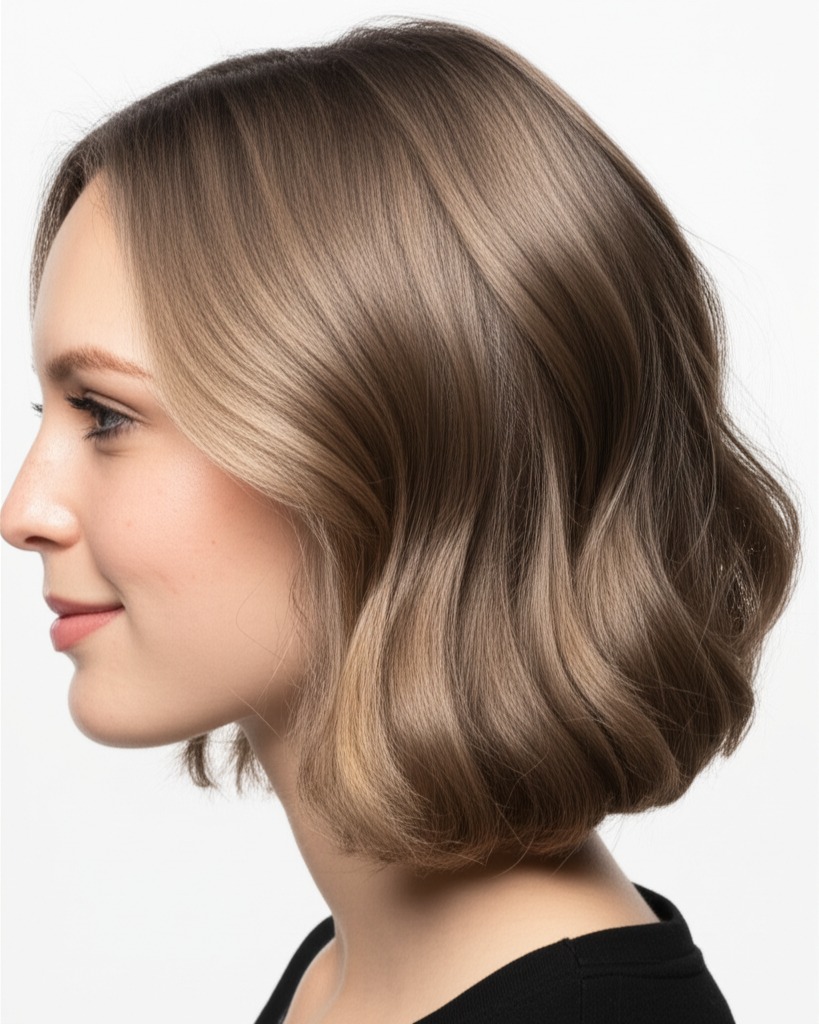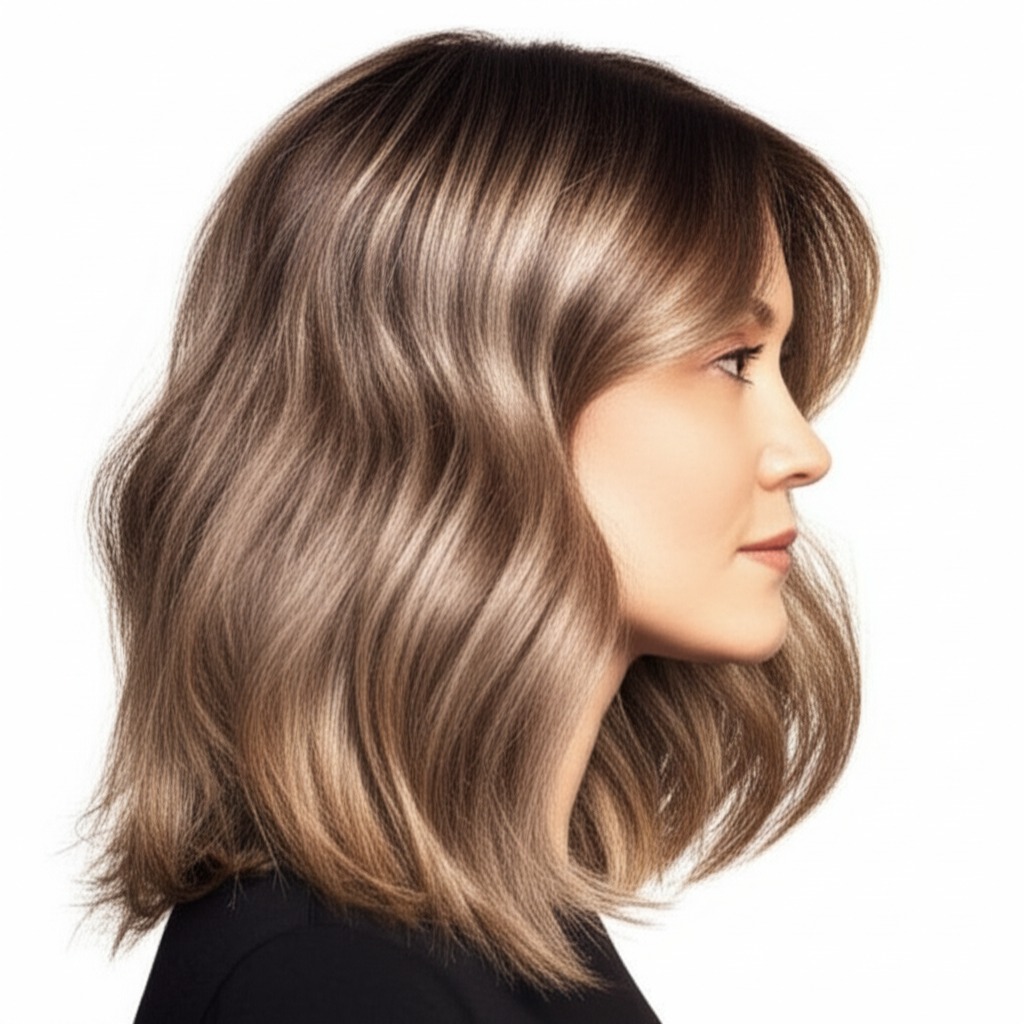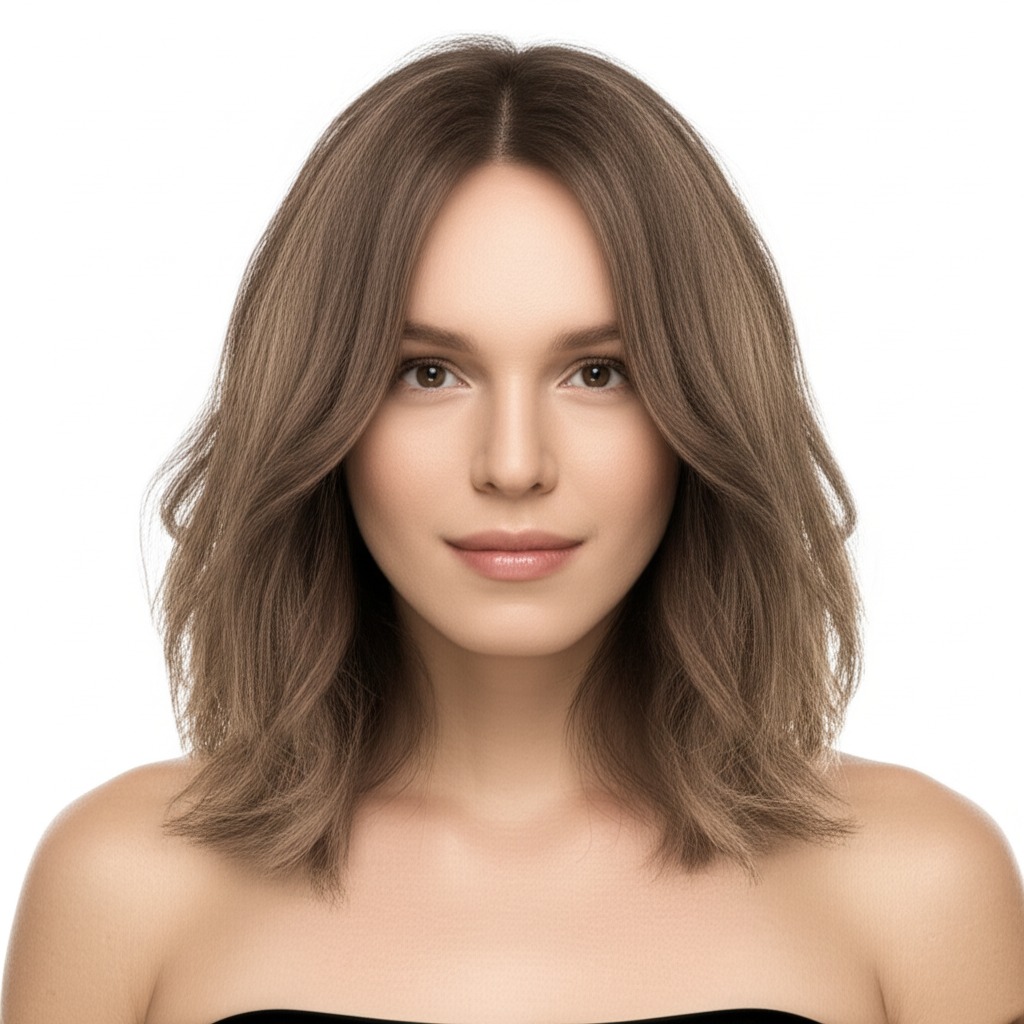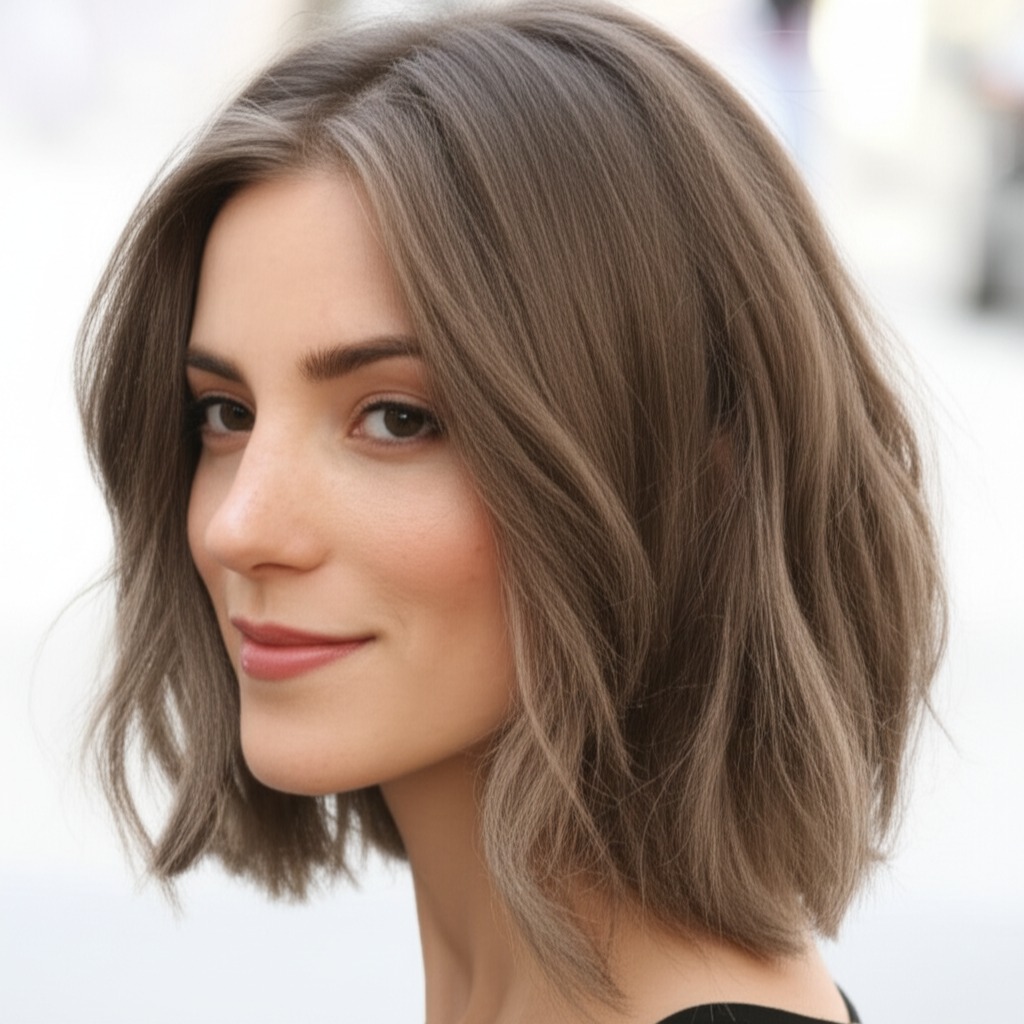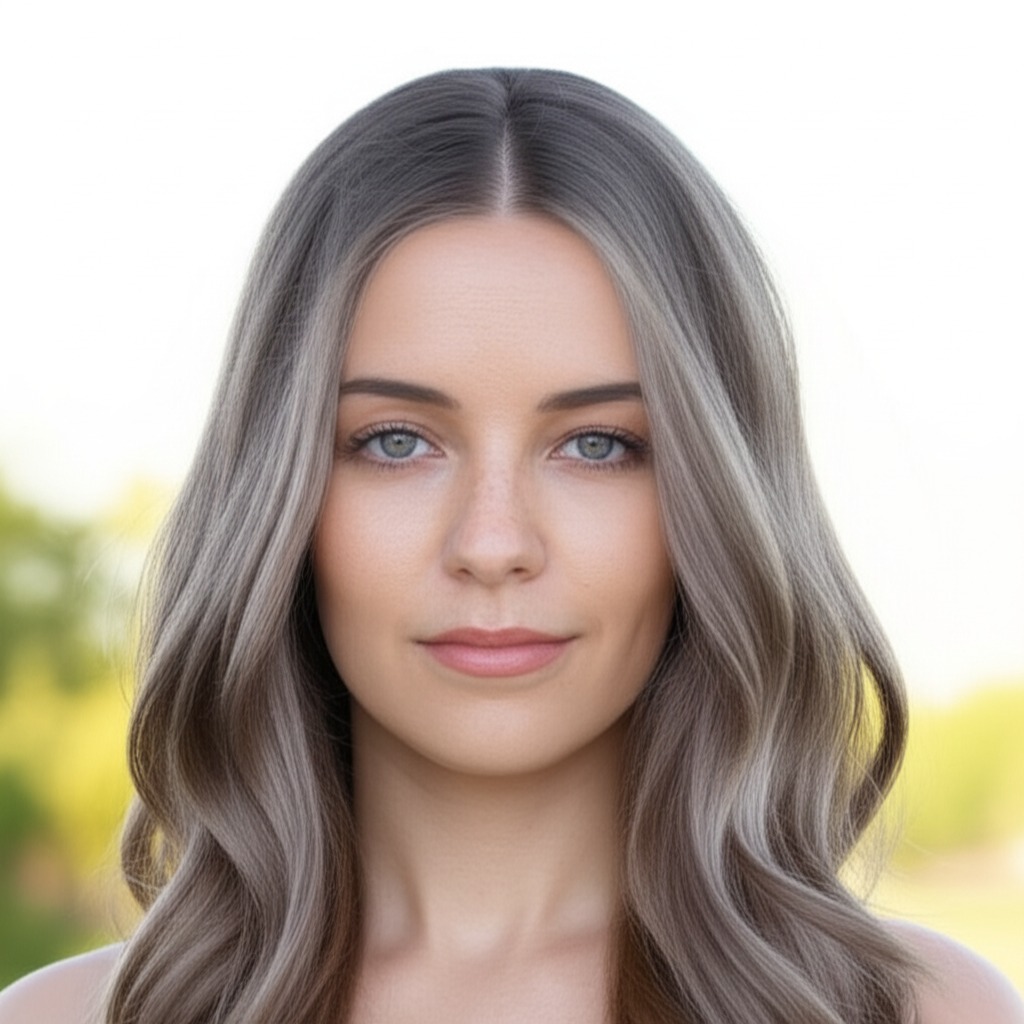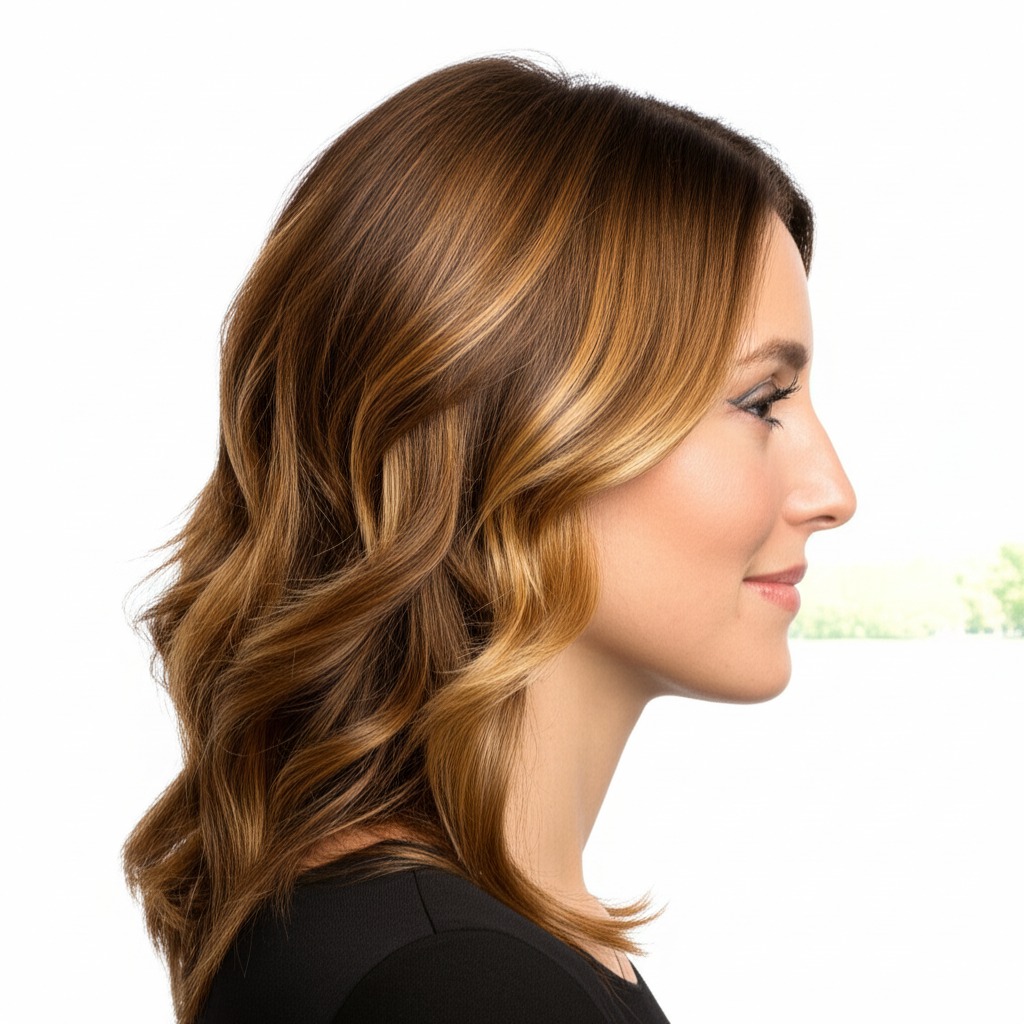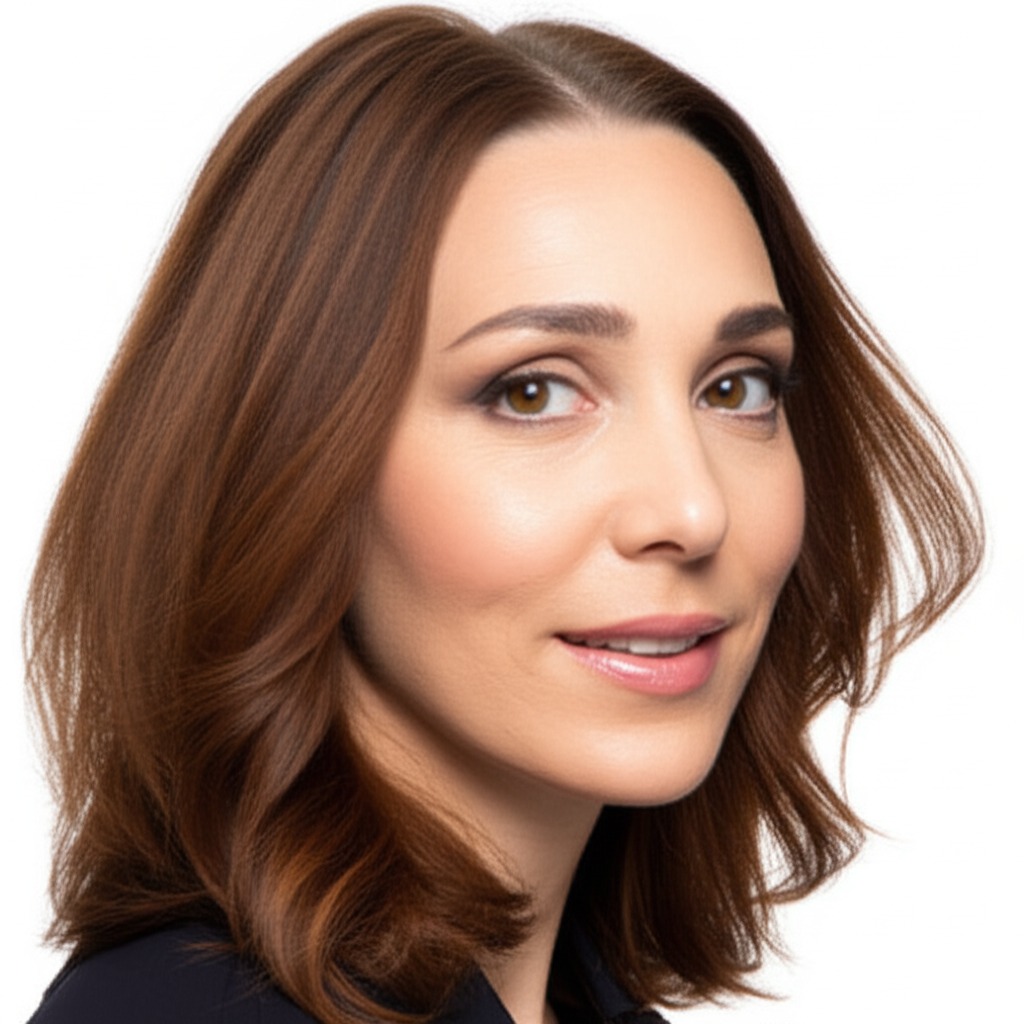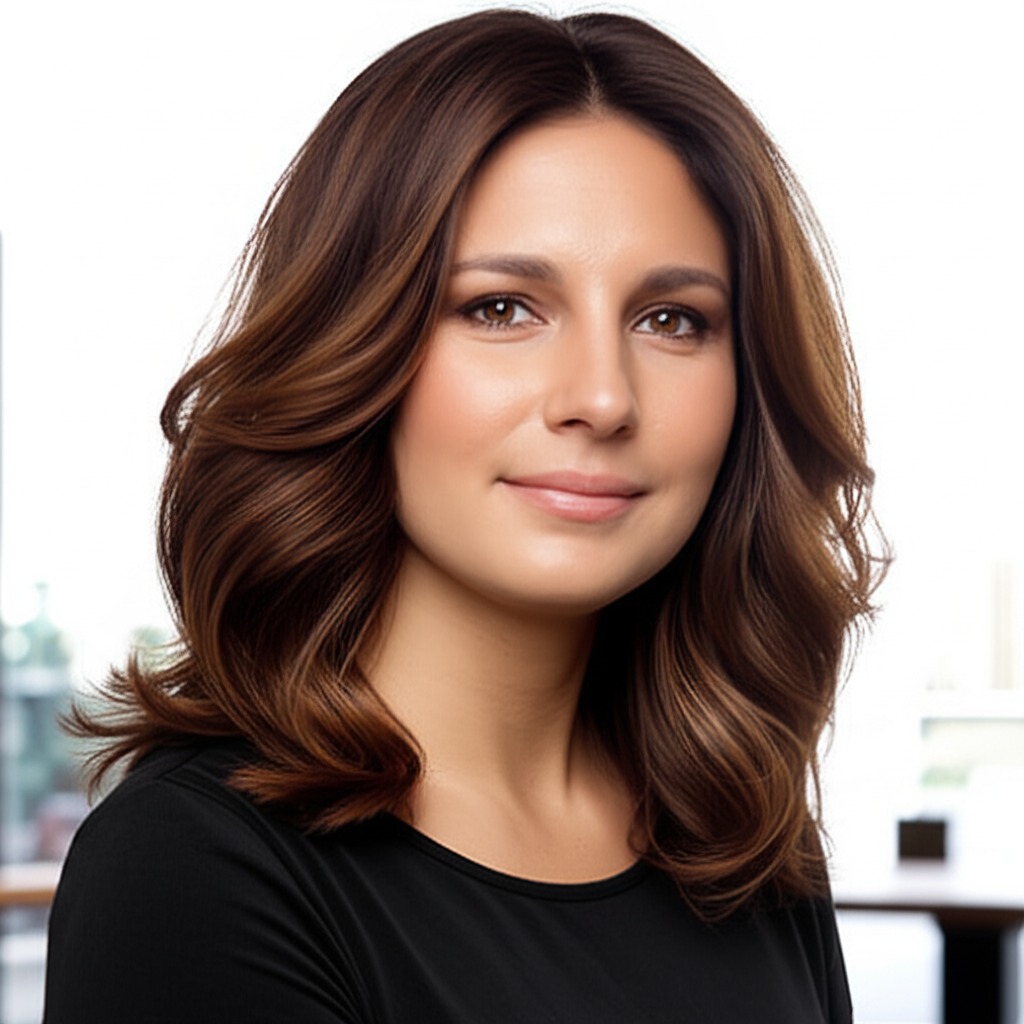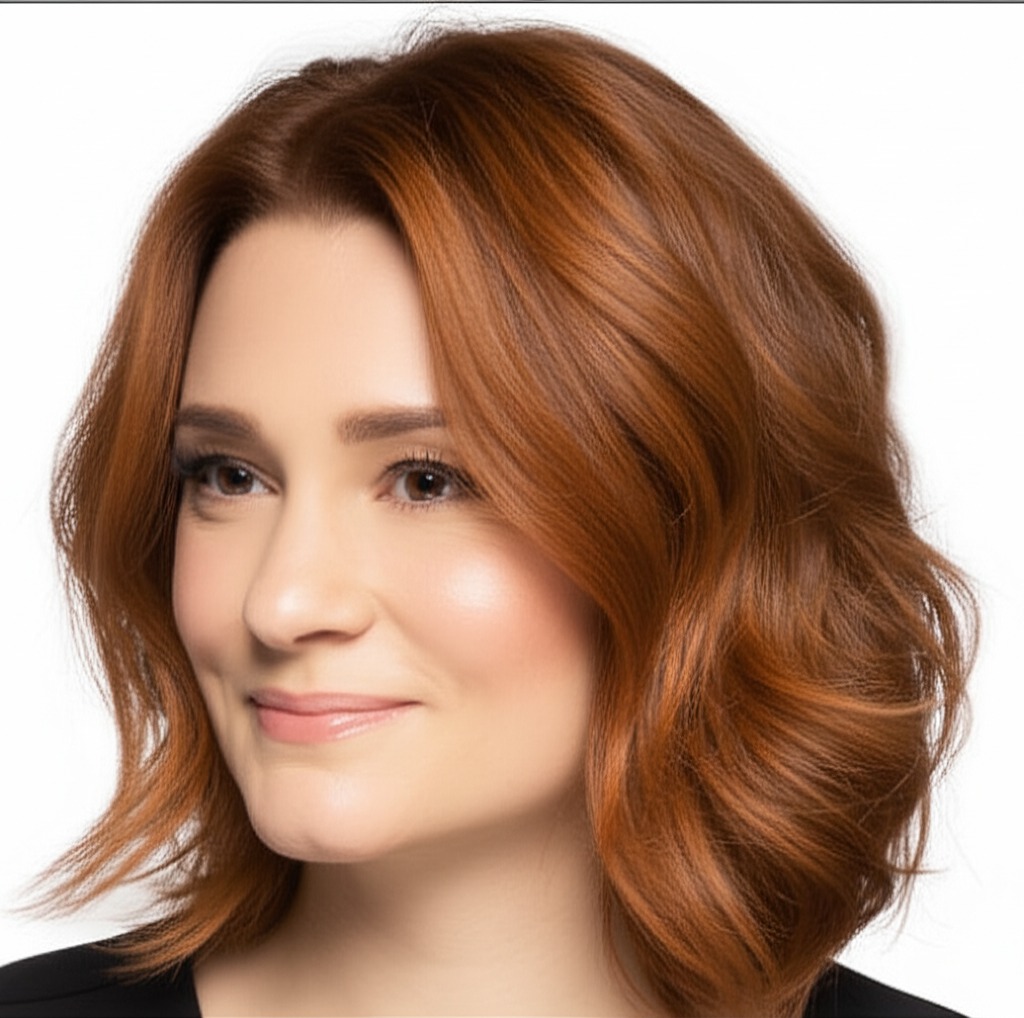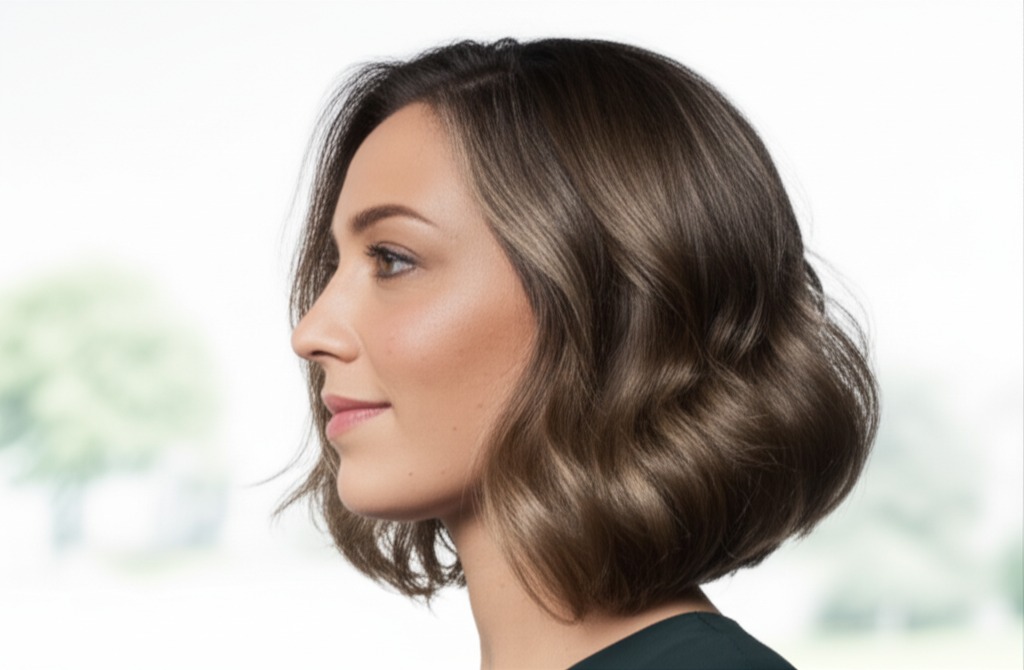#Mushroom Brown Hair Color: A Guide to Earthy Elegance
Mushroom brown is the hair color trend right now – and for good reason! It’s a sophisticated, grounded shade that feels both modern and timeless. But what exactly is mushroom brown? And who can pull it off? This guide breaks down everything you need to know about achieving this coveted look, from understanding the nuances of the shade to keeping it looking its best.
#1. Defining Mushroom Brown: Undertones & Levels
Mushroom brown isn't one single color; it’s a family! It generally refers to shades that evoke the natural colors found in mushrooms – think earthy browns with hints of gray, taupe, or even subtle green. The key is balance and depth.
- Undertone: Most mushroom browns lean towards cool or neutral. Warm undertones (reds/oranges/yellows) can clash, making the color look muddy or brassy. However, skillful stylists can adapt it for warmer skin tones – more on that later!
- Cool Mushroom Brown: This has a noticeable gray or ashiness to it. It’s perfect for creating a sleek and modern vibe.
- Neutral Mushroom Brown: This is the most versatile option. It contains just enough cool undertone to keep it from being too warm, allowing it to complement a wider range of skin tones.
- Depth (Levels): Hair color levels run on a scale of 1-10, with 1 being the darkest black and 10 being the lightest blonde. Mushroom brown typically sits between levels 3-7.
- Level 3-4: Darker mushroom browns are richer and more dramatic. They work well for those wanting to cover grays or add depth without a drastic change.
- Level 5-6: Medium mushroom browns are the most common interpretation of the trend – versatile, flattering, and easy to maintain.
- Level 7: Lighter mushroom browns offer more dimension and lightness while still retaining that earthy feel.
#2. Who Does Mushroom Brown Flatter?
While almost anyone can wear mushroom brown with the right adjustments, here's a breakdown of who it generally looks best on:
- Skin Tone & Undertone:
- Cool Skin Tones (pink/blue undertones): This is your ideal match! Cool mushroom browns will enhance your complexion and create a harmonious look.
- Neutral Skin Tones (mix of pink/yellow): You have the most flexibility! Experiment with both cool and neutral-leaning mushroom browns to see what you prefer.
- Warm Skin Tones (golden/yellow undertones): This requires more finesse from your stylist. To avoid brassiness, a cooler base color is essential, and stylists may use techniques like lowlights or root shadowing to add depth without overwhelming the warmth in your skin.
- Eye Colors: Mushroom brown complements almost every eye color!
- Brown Eyes: It enhances their richness and adds definition.
- Blue/Green Eyes: The cool tones create a beautiful contrast, making eyes appear even brighter.
- Hazel Eyes: The earthy shades bring out the different flecks of color within hazel eyes.
- Natural Level Starting Points:
- Levels 1-3 (Dark Brown to Black): A significant lightening process will be required, potentially involving multiple sessions. Be prepared for a longer appointment and more investment.
- Levels 4-6 (Medium Brown): Achieving mushroom brown is generally easier with this starting point, requiring less processing time.
- Levels 7-9 (Light Brown to Dark Blonde): You’re already closer to the desired lightness! Your stylist may focus on toning and adding depth rather than significant lightening.
#3. Technique Options: From Subtle to Statement
The application technique dramatically impacts the final result:
- Single Process: This is a straightforward color application covering all hair evenly. Best for achieving a solid, uniform mushroom brown look – ideal if you’re starting at a similar level or want minimal change.
- Highlights/Lowlights: Adding dimension! Lowlights (darker shades) create depth and contrast, while highlights (lighter shades) add brightness. This is great for those wanting to enhance their natural hair color.
- Babylights: Super fine, delicate highlights that mimic the look of naturally sun-kissed hair. Adds subtle lightness and dimension.
- Gloss/Toner: Used after coloring or lightening to refine the tone and add shine. Essential for achieving the perfect mushroom brown hue – especially to combat brassiness.
- Balayage-Effect vs Solid: Balayage creates a softer, more natural transition with hand-painted highlights that are darker at the roots and gradually lighter towards the ends. A solid color application is more uniform from root to tip.
#4. Maintenance & Longevity: Planning for Success
Mushroom brown requires commitment!
- Wash Frequency: Aim for 2-3 washes per week using a color-safe shampoo.
- Toner Refresh: Expect to reapply toner every 6-8 weeks, or sooner if you notice brassiness or the color fading.
- Root Growth Pacing: Discuss with your stylist how quickly you want your roots to show and plan accordingly for touch-ups. A balayage effect will blend root growth more seamlessly than a solid application.
- Budget/Time Planning:
- Initial Color: $150 - $400+ (depending on salon, stylist experience, and hair length/density)
- Maintenance (toner): $75 - $200 every 6-8 weeks.
- Appointment Time: 2-4 hours for the initial color; 1-2 hours for toner touch-ups.
#5. Seasonality & Pairing with Cuts: Adapting to Your Style
Mushroom brown is surprisingly versatile!
- Bob/Lob: A sleek, blunt bob or lob looks incredibly chic with a cool mushroom brown shade.
- Long Layers: The depth and dimension of mushroom brown are beautifully showcased in long layers, adding movement and softness.
- Pixie Cut: A bold pixie cut can be softened by the earthy tones of mushroom brown, creating an edgy yet sophisticated look.
- Seasonal Tweaks:
- Fall/Winter: Embrace richer, deeper shades for a cozy feel.
- Spring/Summer: Opt for lighter, more muted versions with subtle highlights to brighten your complexion.
- Event Occasions: Mushroom brown is suitable for work, daytime outings, and evening events. A gloss can add extra shine for weddings or special occasions.
#6. At-Home Care: Protecting Your Investment
Proper aftercare is crucial!
- Sulfate-Free Shampoo & Conditioner: Sulfates strip color, so opt for gentle formulas specifically designed for colored hair.
- Clarifying Cadence: Use a clarifying shampoo every few weeks to remove product buildup – but don't overdo it!
- Heat Protection: Always use a heat protectant spray before using any styling tools (blow dryer, straightener, curling iron).
- Color-Safe Styling Tips: Avoid harsh chemicals and excessive sun exposure. Rinse hair with cool water to seal the cuticle and lock in color.
- Product Checklist: Color-safe shampoo & conditioner, heat protectant, leave-in conditioner or serum.
#7. Common Pitfalls: Prevention is Key
- Brassiness: The biggest concern! Use purple shampoo/conditioner regularly (but not excessively) to neutralize yellow tones. A cool toner is essential during the coloring process.
- Banding: Uneven color application, often due to overlapping product or inconsistent processing time. Trust a professional stylist who understands proper techniques.
- Patchiness: Can occur with at-home attempts. Seek professional help for best results.
#8. Pros & Cons: Weighing the Options
Pros:
- Versatile: Works well across different hair lengths and styles.
- Sophisticated: A timeless and elegant color choice.
- Flattering: Complements a wide range of skin tones (with proper adjustments).
Cons:
- Maintenance Burden: Requires regular toner touch-ups to maintain the desired shade.
- Fade Risk: Cool tones tend to fade faster than warmer ones, requiring more frequent upkeep.
#9. Salon Consultation Script: Setting Expectations
Before your appointment, be prepared to discuss these points with your stylist:
- "I'm interested in mushroom brown hair color."
- "Can you show me examples of different shades and techniques?"
- "What level are we aiming for based on my current hair color?"
- “How will this shade complement my skin tone?”
- “What is the best technique to achieve a natural-looking result, considering my hair texture and density?”
- "How often will I need to come in for touch-ups/toner refreshes?"
- "Can you recommend specific at-home care products?"
#10. FAQs: Your Burning Questions Answered
- Is mushroom brown good for gray coverage? Yes, darker shades (levels 3-4) can effectively cover grays. A toner will be needed to keep the color looking fresh.
- Can I achieve this at home? While possible, it’s risky, especially if you're making a significant change or have challenging hair. A professional stylist ensures even application and accurate tone correction.
- How long does mushroom brown last? The base color can last 6-8 weeks; the toner fades faster (4-6 weeks).
- Will I need to lighten my hair significantly? It depends on your starting level. Darker hair will require more processing.
- What’s the difference between mushroom brown and ash brown? Mushroom brown is generally warmer than ash brown, with a more earthy feel. Ash browns are cooler and grayer.
- Can I add highlights to my mushroom brown hair? Absolutely! Face-framing babylights or balayage can enhance dimension and brightness.
